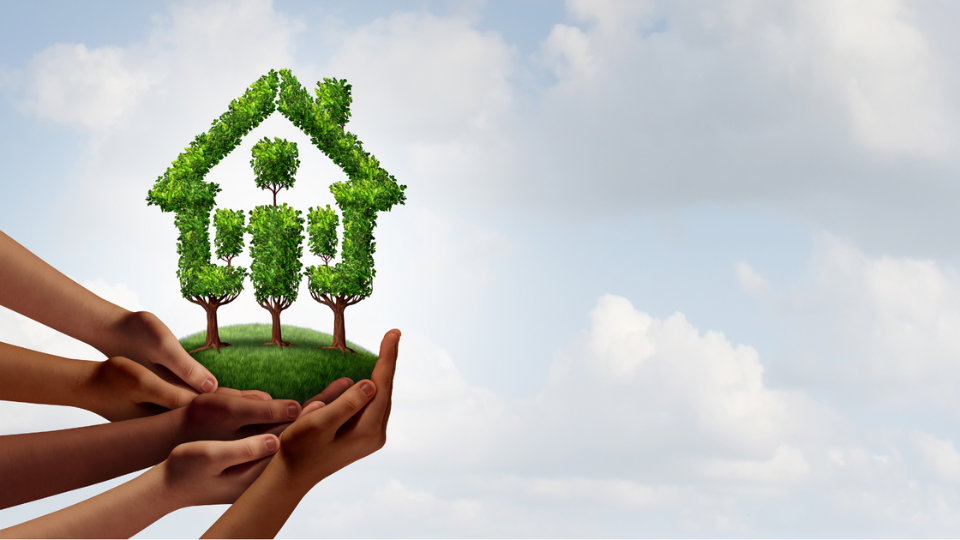Beyond the house: the importance of gardens and greenspace around where we live
Posted on 28 October 2022
- Place
In this guest blog, Elaine Caldow, Public Health Programme Lead at NHS Ayrshire and Arran and member of the Environment and Spaces for Public Health Partnership Group, discusses how our homes are central to health and wellbeing, and why it is important to look at how people living in different housing tenures used greenspace during the COVID-19 pandemic.
Living through a pandemic has brought home the importance of having the opportunity to be outdoors for our mental wellbeing and we’ve learned a lot about people’s experience of access to good quality greenspace.
For me, making space in my day, even for a few minutes, to sit or potter in my garden, to take in the air and watch the seasons change is just as important as walking on the beach or going for a bike ride. I often work from home and taking a moment to pause, look out the window at the birds or to watch the rain (yes, I live in the West of Scotland) grounds me and makes me feel good! It’s as much about the calm, quiet connection to the natural world as it is about being physically active.
Our health and wellbeing is affected by the homes we live in and spend most of our time in. Our houses are more than just physical structures: they are where we grow up, where we socialise with friends and family, where we work, and where we should always be able to relax, escape and feel safe. That surely must go beyond the built environment to include the natural spaces around our homes. So, it’s important that we understand how access to gardens and private greenspaces differ across different housing tenures, population groups and where inequalities in access might exist.
Our latest report
Our knowledge about the relationship between housing tenure and access to, and use of, private and public greenspace was limited. To address this, the Environment and Spaces for Public Health Group looked at two national surveys (YouGov/University of Glasgow and Public Health Scotland CEYRIS), taken during the COVID-19 pandemic, specifically reviewing findings in this area and have published the Use of private and public greenspace by housing tenure during the COVID-19 pandemic report.
The report shows that private and social housing tenants are less likely to have outdoor space at home and are also less likely to use public greenspace. This highlights the need for us to consider how access to greenspace is distributed across our populations and for this to be a central consideration in spatial planning and housing policy. It also helps to pave the way for local, creative conversations with housing providers, tenants, and community planning partners about how to improve access to good quality outdoor spaces for those who need it most.
This could include:
- retrofitting gardens
- providing access to nearby private greenspace
- improved access to public greenspaces, including the re-allocation of road space
- remediation of nearby vacant or derelict land
- making better use of land around NHS facilities
The possibilities are exciting!
What’s next?
There is a need for further research to build on our findings and improve our understanding of the differing use of private and public green and open spaces, particularly for those who do not have access to open space at home, households with children and disabilities, and low-income households. There is also a need to consider the minimum standard of private outdoor space required for households and the factors that influence this, so we can maximise the benefits for the health and wellbeing of the people who live there.
Our homes are indisputably central to health and wellbeing, and with collective efforts we can help more people to benefit from private and public greenspace.

